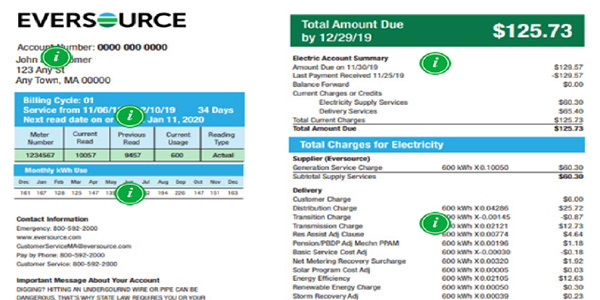By Rich Heidorn Jr.
ISO-NE on Thursday proposed a “hybrid” filing Section 205 of the Federal Power Act to allow some generators to recover the costs of NERC critical infrastructure protection (CIP) requirements, but Eversource Energy suggested alternatives, saying it doesn’t want the costs collected as part of its transmission rates.
The RTO’s Jonathan Lowell made the proposal at a meeting of the New England Power Pool’s Transmission Committee on Thursday. It would allow cost recovery for generators designated by the RTO as “critical” to the determination of interconnection reliability operating limits (IROLs), which have higher CIP standards than other generators.
Violations of IROLs can lead to instability, uncontrolled separation and outages cascading into neighboring regions. Generators are designated as IROL-critical because of their characteristics and locations relative to other control areas, the RTO said.
ISO-NE says it has about as many IROLs as all other ISOs and RTOs together. “Because New England is at the eastern end of the Eastern Interconnection, a contingency in New England can have significant reliability impacts on systems to the west,” explained ISO-NE spokeswoman Marcia Blomberg. “Many interconnection reliability operating limits have been identified in New England to avoid creating those impacts, and many facilities have been determined to be critical to the determination of those limits.”
The RTO is proposing to make a Section 205 filing with FERC to add a new OATT Schedule 17 for the billing and collection of FERC-approved IROL-CIP costs, with the RTO serving as billing agent. It would be based on a formula rate template listing recurring and nonrecurring costs.
The initial filing will “facilitate a smooth and efficient FERC review of the Section 205 formula rate filing by having resolved most controversies in advance,” the RTO said in a presentation.
Critical generators and similarly situated transmission facilities would then make their own Section 205 filings itemizing their costs for FERC review and approval.
ISO-NE said the two-step filing is necessary because the RTO cannot be responsible for supporting the costs of individual facilities.
‘Inappropriate’
But Cal Bowie, representing Eversource, told the committee in a presentation that it is “inappropriate” for generators to recover expenses through regional network load transmission charges. “Transmission charges should primarily reflect the costs of building, operating, maintaining and ensuring the reliability of the transmission system,” Eversource said.
The company said the RTO should instead consider collecting the costs under its capacity load obligation (used to recover the “missing money” not recovered by generators in the energy market) or real-time non-coincident peak load obligations (Schedule 3 reliability administration service costs). Eversource also said the RTO should create a separate billing item for CIP costs to make them transparent.
According to the New England States Committee on Electricity, transmission costs are between 11 and 18% of total electric bills for residential customers in the region. Total transmission charges have risen from about $869 million in 2008 to $2.25 billion in 2018, NESCOE says.
Asked whether ISO-NE could accommodate Eversource’s proposal, Blomberg said the RTO believes its cost-allocation plan “is the most appropriate solution to ensure compensation” for the NERC compliance requirement.
“The ISO is continuing to listen and discuss this issue with stakeholders,” she added.
In a presentation to the Transmission Committee on March 27, ISO-NE had proposed a cost-of-service reimbursement method, saying a 2017 effort to create a formula rate failed because the RTO was unable to identify a methodology to determine an IROL-critical “proxy” generator or estimate reasonable costs for compliance with the NERC standard.
ISO-NE says the lack of “clear and precise CIP requirements” in standard CIP-002-5.1a Attachment 1 may lead generators to differing interpretations on what steps they need to take. The RTO said costs disclosed by the operators of seven IROL-critical generating stations showed both one-time capital costs and recurring O&M expenses. There was no obvious correlation between costs and generator size, type or vintage, ISO-NE said.
Blomberg said a formula rate is not the same as a proxy rate approach. “Under a formula rate approach, the facility submits its specific costs for approval. A proxy rate is an estimate of the costs of a generic, but similar, facility without consideration of the actual costs. IROL-CIP facilities all have different characteristics, which make proxy rate approach extremely challenging.”
ISO-NE said IROL-CIP costs should be allocated to regional network service and through or out service because accurate IROLs allow the RTO to maximize use of the transmission system.
Lowell told the committee at the March meeting that the ISO-NE would consider alternatives to the cost-of-service proposal if it had broad support within NEPOOL and had a cost estimation methodology the RTO could defend as just and reasonable.
NERC spokesman Martin Coyne declined to comment on the RTO’s characterization of the CIP requirements.
“[We] can’t comment on a presentation that’s not ours or for security purposes discuss details on critical facilities,” he said.
He added: “It is common for entities to seek information from NERC on how specific requirements in our stakeholder consensus-based standards apply to them.”
Business Procedure Change Approved
In other matters, the committee approved ISO-NE’s proposal to make administrative changes to Ancillary Service Schedule 2 of Section II of the Tariff and the VAR Business Procedure, along with revisions to accommodate electric storage reactive resources. The changes move requirements from the Business Procedure into the Tariff and incorporate electric storage facility language into the Schedule 2 capacity cost compensation program.
The RTO said the changes were related to FERC’s Feb. 25 approval of revisions to Section II that created multiple constructs for storage devices to participate in the RTO’s day-ahead and real-time energy markets (ER19-84). (See FERC Accepts ISO-NE Storage Tariff Revisions.)



